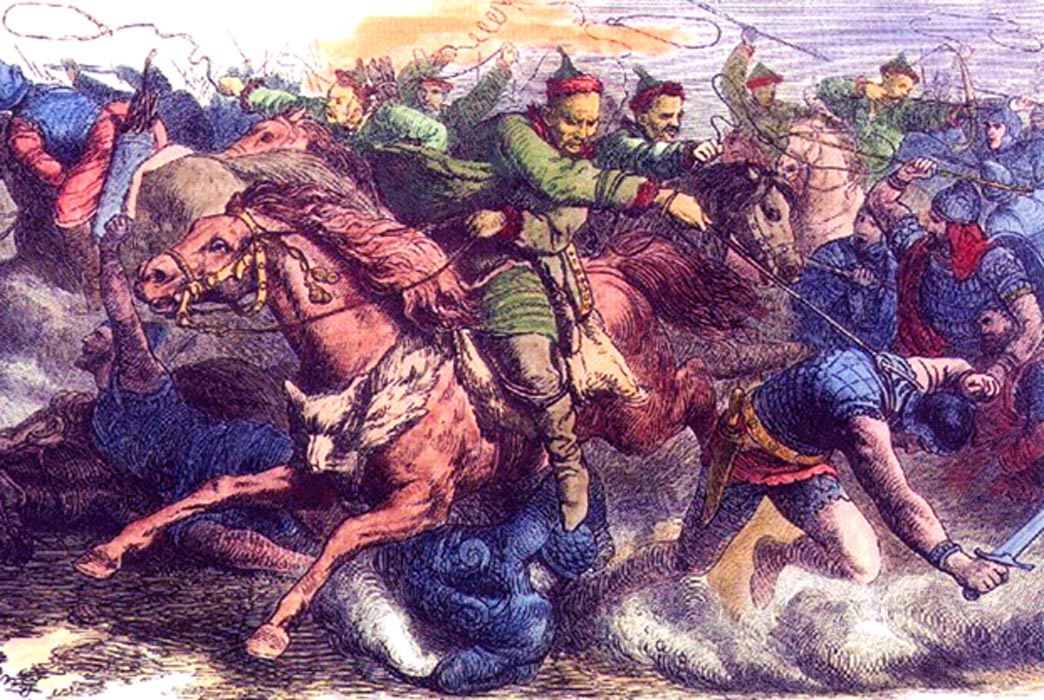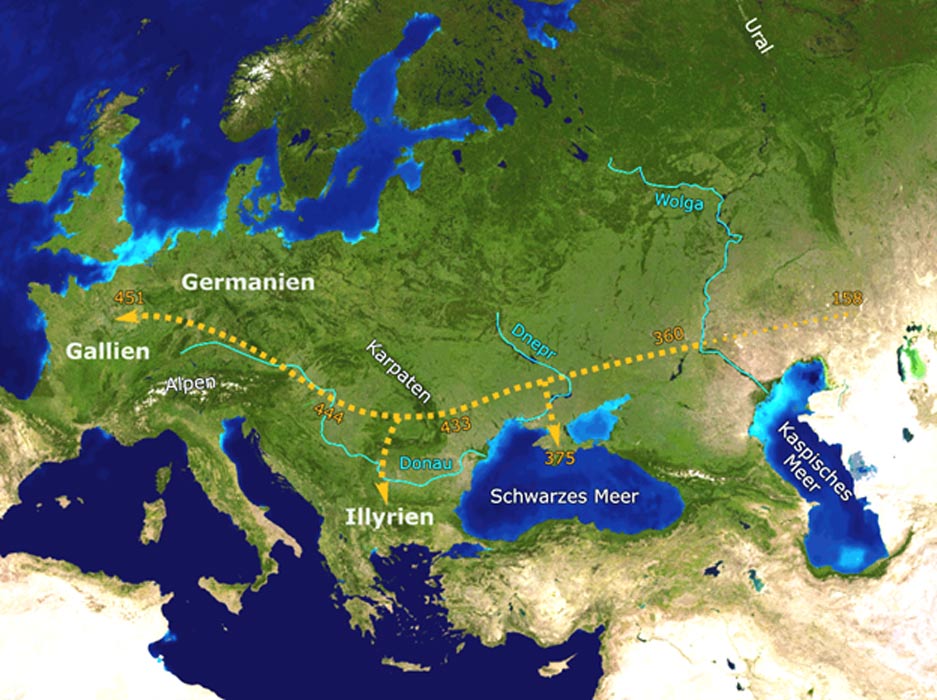
The Hunnic War Machine: The Push Westward – Part I
The steppe has produced many notable horse archers who brought terror and devastation to the known world during ancient times. But of the many steppe peoples who penetrated the civilized world, none brought more destruction then the Huns.
Sometime during the mid-to-late fourth century, the Huns pushed westward. While on the move, they encountered the Alans. The Huns quickly engaged and slaughtered them. Afterwards, the Huns made an alliance with the survivors. With the Alans riding alongside the Huns, they headed towards the lucrative lands of Goths, particularly that of Greuthungs, led by King Ermanaric, sometime in the 370’s. The attack was so swift and relentless that the Goths could not halt their progress. Ermanaric could do little to thwart the Hun advance, and in despair, he committed suicide. With Ermanaric dead, another took his place by the name of Vithimiris. Vithimiris continued the fight, even hiring Hun mercenaries. However, it was all in vain. Vithimiris could not defeat the Huns and eventually lost his life in 376.

Huns in battle with the Alans. An 1870s engraving after a drawing by Johann Nepomuk Geiger. (Public Domain)

A suggested path of Hunnic movement westwards. (CC BY-SA 3.0)
With Vithimiris dead, Alatheus and Saphrax took charge, as Viderichus, the son of Vithimiris, was too young to rule. Rather than to continue fighting the Huns, they led the Greuthungs to the Danube River in 376. Furthermore, the names Alatheus and Saphrax appear Alanic, and may have been of a Sarmatian/Alan origin.
The Seeds of Destruction
Besides the Greuthungs, the Thervingi Goths, led by Fritigern and Alavivus, also joined them to escape the Huns, and in hopes of seeking asylum in the Eastern Roman Empire. The total number of refugees is disputed. The fourth century Greek sophist and historian Eunapius indicates that 200,000 Goths appeared along the Danube, while Peter Heather suggests roughly 100,000. Whatever the number, the impact was great, not only on the Goths but also on the Eastern Roman Empire. Two years after arriving at the Danube, the Goths were allowed to enter into Eastern Roman territory. Once established, the Roman provincial commanders Lupicinus and Maximus took advantage of the refuges, leading the Goths to revolt which ended in a Gothic victory at the Battle of Adrianople in 378.

“Grande Ludovisi” sarcophagus, with battle scene between Roman soldiers and Goths. (Public Domain)




